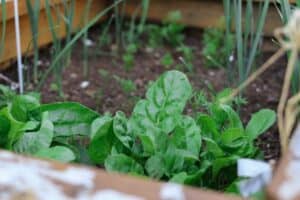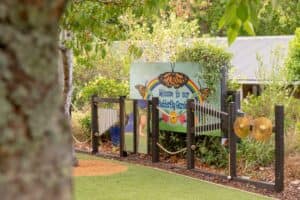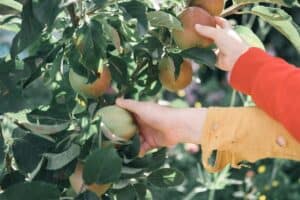Springtime is almost upon us and with it comes warmer weather, new growth, and the chance to take the classroom outside.
Getting students outside in the fresh air is super beneficial for their well-being and incorporating class lessons outside also provides opportunities for them to learn about themselves and the world around them.
Many schools and ECEs across the country are beginning to utilise their outdoor spaces, equipping them to become resources that students can use to develop their creative and problem-solving skills. A strong environmental focus is paving the way for incorporating nature into the learning space through gardens, mud kitchens, native plantings, and many other organisational systems.
Here at Creo, we recognise the importance of teaching kids about growing their own fruits and vegetables, harvesting, and planting. We have seen many schools and ECEs create veggie gardens where the students can put their green thumb to work, but why not continue this a step further by adding a few more edible spaces.
Edible spaces not only bring nature into your learning environment, but they also provide valuable learning experiences in the form of growing, harvesting, nurturing and even cooking. These spaces could incorporate vegetable beds and orchards all the way to chickens, pigs, and bees. It’s a way to bring students closer to nature and practice being aware, respectful, and curious about their surroundings.
Edible spaces, by nature, are usually peaceful, calm, and quiet, providing a relaxing space within the noise of a busy school environment.
Download the full guide: “25 Ways to Activate Space in Your School”
Creo edible spaces options
Vegetable gardens:
Veggie gardens are a great way to get students interested and enthusiastic about horticulture and where their food comes from. It provides them with the opportunity to learn about ecosystems and nutrition. They are an accessible way for all students to get involved, take ownership of their space in their learning community, and really see the rewards of their work play out in real-time.
Butterfly gardens:
Butterfly gardens don’t have to be time-consuming. Once established in a sheltered spot, you can simply let the students plant some attractive flowers, add some decorative elements and a source of water such as a small bowl, and you’ve got yourself a beautiful butterfly garden where your students can watch the small creatures bask in the sun and get some nourishment.
Orchards:
Like veggie gardens, planting orchards or fruit trees in your outdoor spaces is a fantastic way to get students excited about nutrition while also developing practical skills and learning about sustainability and farming. These trees also provide tasty treats for all their hard work, what’s not to like about that.
Bee gardens:
Bees are very important to our environment. By creating a safe place for them to live we also benefit. Planting colourful flowers doesn’t just brighten your space but attracts the bees who pollinate, bringing new life and potentially honey to enjoy. Having areas where students can observe the natural world also helps develop student’s awareness of the natural world around them and how to care for it.
Animal spaces:
Animals are always cute and fun to have around. They too allow kids to interact with their environment and teaches them about responsibility by having other living things to look after and take care of. Incorporating animals such as chickens and bees that produce eggs and honey is a great addition to any space and gets students out there and learning about their food.
Considerations when selecting edible spaces options.
Location is important when incorporating edible spaces. It can be a great way to bring life into tucked away unused spaces. All you need is an area with, ideally, good soil and natural light. If you have a lot of choices on location, maybe near to a cooking or technology classroom is best. Likewise adding edible spaces near the library or other multipurpose spaces is also great, as these areas can be used as outdoor classrooms during warmer months.
Another to consider is scale. You must take into account the scale suitable to your school or ECE size, as well as the level of interest in an edible space. Keep in mind there will have to be ongoing maintenance, and upkeep, especially if you are creating a flourishing garden. The level of care needed is important when deciding what kind of edible and/or natural elements you want to incorporate. Not all require as much or as little time, so make sure that you are prepared and able to maintain in the long run.
For more elements of play check out our free downloadable book.
